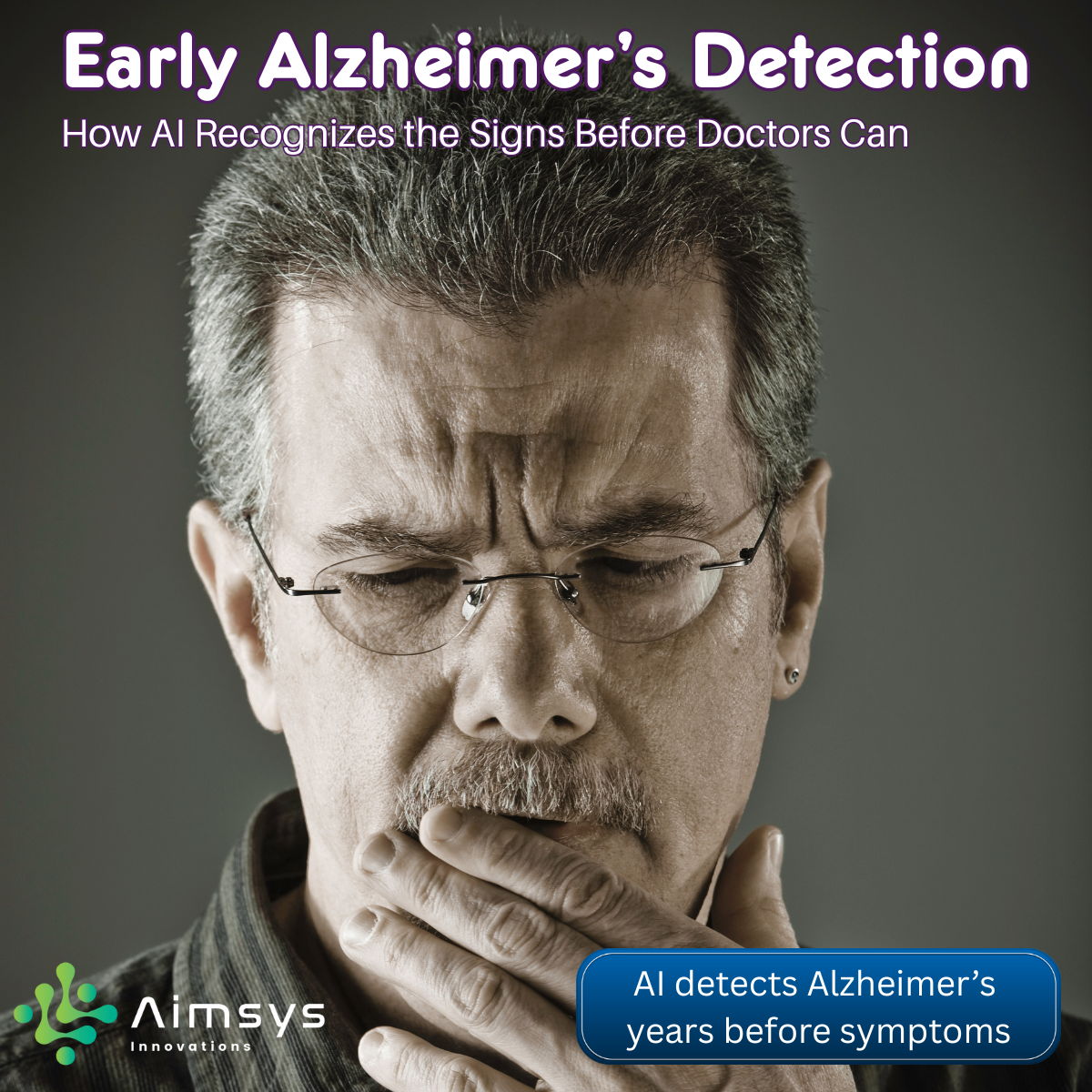Posted At: Jul 17, 2025 - 334 Views

Early Alzheimer’s Detection – How AI Recognizes the Signs Before Doctors Can
Alzheimer’s disease is a progressive neurological disorder that often goes undiagnosed until it has significantly advanced. Traditionally, diagnosis relies on noticeable memory loss or cognitive decline, by which point, treatment options are limited and less effective. But AI is beginning to change that.
By analyzing subtle changes in speech, language, and behavior, AI systems can detect early warning signs of Alzheimer’s long before a formal clinical diagnosis. This breakthrough could shift the timeline from “too late” to “just in time.”
🎙️ AI Listens: Speech Patterns as Early Indicators
One of the most promising areas for early detection is speech analysis. People in the early stages of Alzheimer’s often display subtle language related changes that are hard to detect with the human ear. AI, however, can spot these shifts with incredible accuracy.
How it works:
🔖Natural Language Processing (NLP): AI algorithms analyze recorded speech to detect changes in vocabulary, grammar, and fluency.
🔖Acoustic Analysis: Speech becomes slower, more hesitant, and less expressive in early Alzheimer’s. AI tools measure pauses, tone, pitch, and rhythm.
🔖Semantic Drift: People with early-stage Alzheimer’s may use more generic words (“thing” instead of “pen”) or lose the thread of a conversation patterns AI can quantify and track over time.
🔰Example: A 2021 study by IBM and Pfizer used AI to predict Alzheimer’s with 70% accuracy years before symptoms, just by analyzing speech samples from participants.
👀 AI Watches: Behavior & Routine Monitoring
Beyond speech, AI systems can track behavioral changes, many of which are early indicators of cognitive decline. These include forgetfulness, disrupted routines, and changes in movement or social engagement.
How it works:
📌Smart Home Devices: Sensors and wearables track daily patterns sleeping, eating, walking and alert caregivers to unusual behavior.
📌Computer Vision: AI-powered cameras can detect mobility changes, facial expressions, or signs of confusion and agitation.
📌Digital Biomarkers: Smartphone usage, typing speed, screen interaction, and navigation habits can all provide clues. AI connects these dots to detect deviation from personal norms.
🔰Example: MIT researchers trained an AI model that detect signs of dementia.
🧠 Why Early Detection Matters
Alzheimer’s is currently irreversible, but early intervention can slow progression, improve quality of life, and open doors to experimental treatments. Detecting the disease years earlier could mean:
❤️Starting medications and lifestyle changes sooner
❤️Reducing anxiety by providing clarity and planning time
❤️Supporting families and caregivers with better resources
❤️Enabling enrollment in clinical trials for next-generation therapies
hashtag#AlzheimersDetectionhashtag#Neurotechhashtag#EarlyDiagnosishashtag#AIinHealthcare
